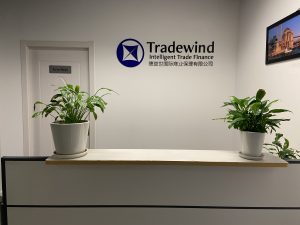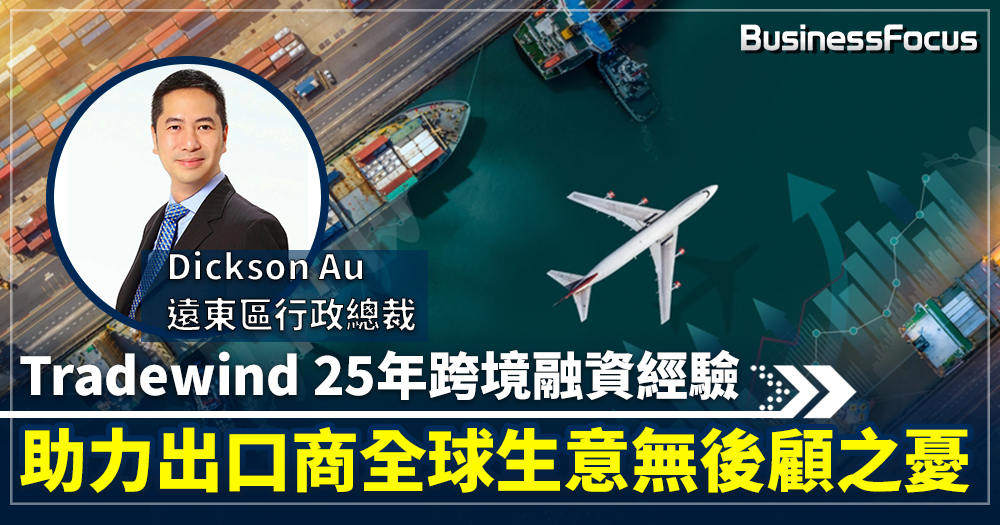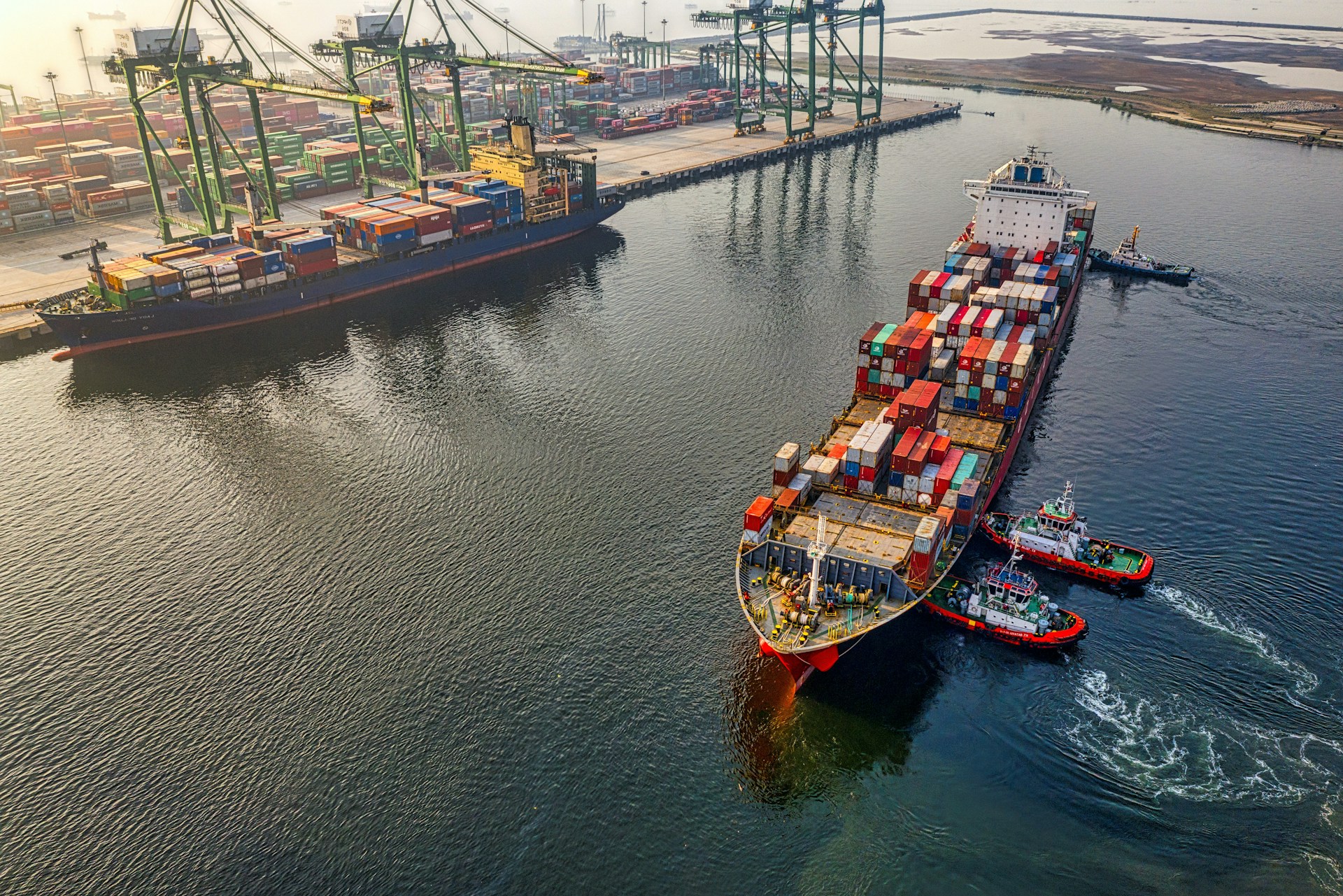*Published in Hong Kong Economic Journal Monthly (March 2023)

China’s manufacturing sector has continued to recover since the relaxation of epidemic prevention policies at the end of last year, bringing new growth momentum to the international trade finance market. Tradewind Finance, which has been in business for more than 20 years, expects its global trade finance business to grow by more than 10% this year compared to last year, and the increase in business in the Chinese Mainland and Hong Kong will reach 15 to 20%.

Peter Maerevoet, Chief Executive Officer (CEO) for Asia at Tradewind Finance, said: “Normal travel between Hong Kong and the Chinese Mainland fully resumed, which has brought us more opportunities for business growth. We have seen a significant increase in business in the Mainland of China so far this year.”
He pointed out that the company will provide $250 million to clients in the Chinese Mainland, while the Hong Kong branch, as the headquarters of the Far East, can provide more than $100 million in trade finance facilities for Asian clients. The company’s global business is expected to increase to well above $3 billion this year.
Helping clients solve cash flow problems
Headquartered in Germany, Tradewind was established in 2000 and currently has over 20 offices in 12 countries around the world, servicing industries such as textile and apparels, food and beverage, seafood, electronics, automobiles, chemical, and consumer goods. The company has been committed to providing liquidity for international small and medium-sized enterprises (SMEs) for many years. In addition to factoring accounts receivable for exporters, it can also provide purchase order financing and supply chain financing for clients.
“Our clients are mostly medium-sized companies with a certain size and operating history, with a smaller share of small and start-up companies,” Maerevoet said.
He added that the company gained a new client in the consumer electronics industry in Hong Kong in 2021. Its original funding amount was only $800,000, which has since grown to $9 million. Another client, a Hong Kong-based steel trader, also enjoyed the upgraded factoring facility. The amount was initially only $6 million but now has tripled to $18 million.
The company’s clients in Pakistan and Bangladesh are garment exporters, and the demand for international trade finance continues to be strong, with the growth of 40% to 50% this year, he said. The company currently has about 200 employees worldwide, and is expected to add 10 this year, of which 3 will be located in the German headquarters, 3 will be in Chinese mainland and Hong Kong, and the remaining 4 will be in the United States and Dubai.
Asian garment manufacturing industry grows rapidly
Tradewind has accumulated a lot of valuable experience in providing financing for Turkish textile trade to Europe in its early days, and expanded its international business vigorously ten years ago. The company develops trade financing solutions for clients that help them maximize their liquidity and meet capital needs through bookkeeping, collection, and payment options that promote international trade.
Maerevoet said that the company is actively exploring new markets in Asia, such as approaching a textile factory and a seafood supplier in Vietnam, as well as a Thai textile company. The company also made a major push into India last year and expects to double its business there this year.
“In recent years, many garment manufacturers have moved out of China as the industry has evolved. Now India and Vietnam are producing garments at a lower cost, which will bring us more new clients in these markets. This year we will focus on Vietnam, and next year we may try to find new opportunities in Indonesia and the Philippines,” he said.
He continued that in addition to acquiring new clients through marketing and referrals from existing clients, the company will also directly contact potential clients through their teams in Hong Kong and the Chinese mainland.
Maerevoet supervises Tradewind Finance’s global finance team and its management in Asia. He has extensive experience in international trade sourcing and supply chain financing operations from his previous positions at P&G in Belgium and Levi Strauss in the US.
Global supply chain change: opportunities amidst crisis
A variety of settlement methods can be used with Tradewind’s trade finance products, including open account (O/A), Cash against Documents (CAD), and Letter of Credit (L/C). Within 24 to 48 hours of receiving an invoice, funding can be released, with an advance ratio of up to 95% and the rest returned after the buyer submits payment to Tradewind.
Moreover, the company, which provides non-recourse international export factoring for cross-border trading companies, offers trade risk management bundled with their cost-effective financing solutions. With this solution, companies can accelerate cash flow, improve collections, and manage bad debt risk.
Maerevoet pointed out that the trade finance industry still has to face a number of challenges this year, including changes in the global supply chain, a high-interest rate environment, and the Russia-Ukraine war. Many competitors closed down during the epidemic, reducing obstacles to the company’s future growth.
He also added: “In recent years, European and American clothing companies have tended to near-shoring production, that is, bringing the production process close to the sales place, such as in Germany, France, Spain, and the United States. In the face of supply chain issues during the epidemic, they will place orders in Asia in advance to obtain semi-finished products for stock.” He said that under such circumstances, Asian manufacturers will bear greater pressure on cash flow and need to find suitable trade finance solutions.
About Tradewind Finance
Founded in 2000, Tradewind Finance maintains a network of offices all over the world, including Bangladesh, Brazil, Bulgaria, China, Hong Kong SAR, Hungary, India, Pakistan, Peru, Turkey, UAE, and the USA as well as the headquarters in Germany. Combining financing, credit protection, and collections into a single suite of trade finance products, Tradewind brings streamlined, flexible, and best-in-class services to the world’s exporters and importers.



